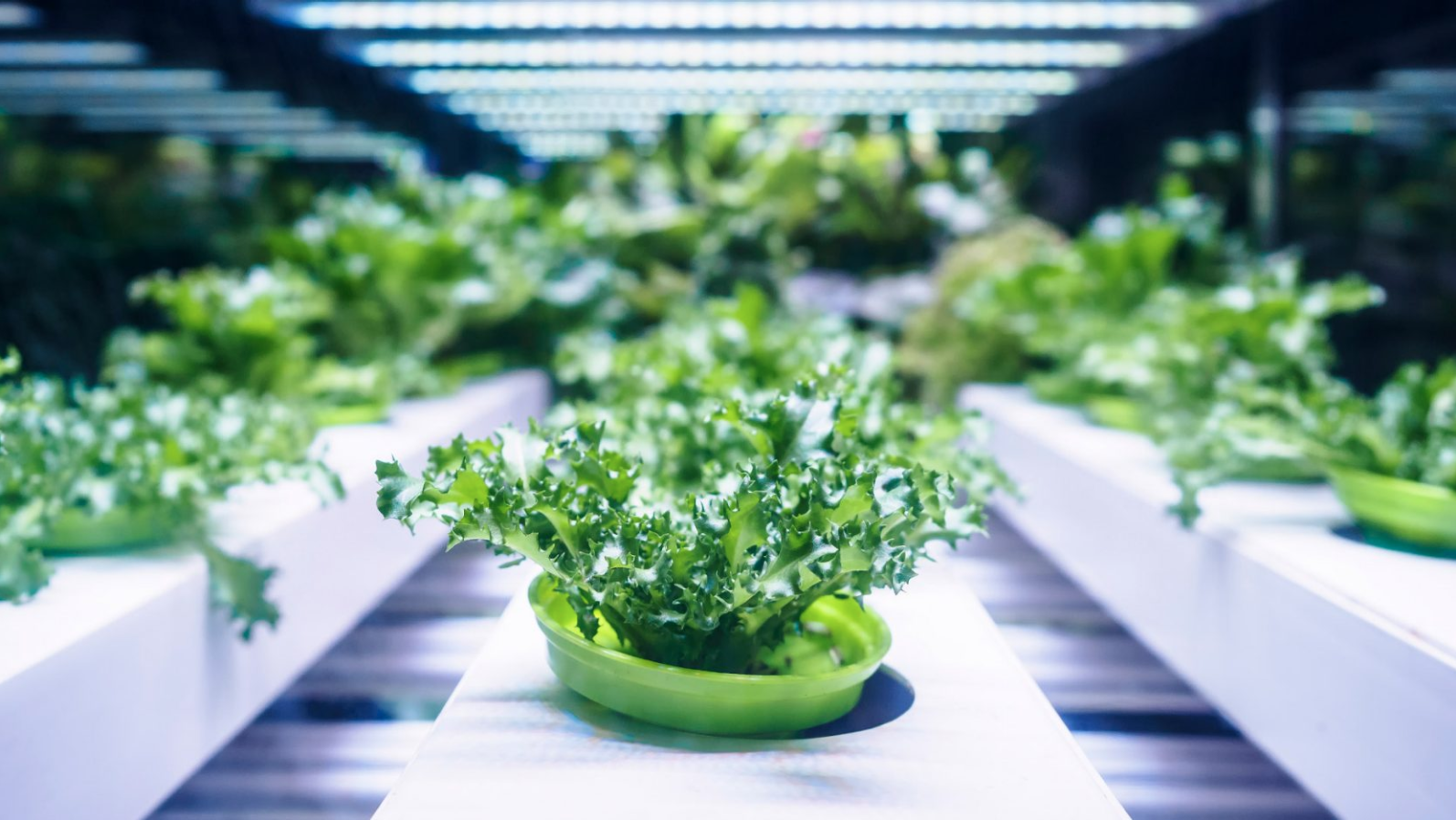Farming traditionally was relegated to rural areas because that’s where the fertile land is. Yet today, people are making urban farming a reality, which increases reliance on newer technology.
If you’re reading this article, thank a farmer. That’s because farming is the basis for all of civilization as we know it. The only things that Neolithic humans needed to create this explosion of population and ideas were seeds, soil, a sharp stick, and a snazzy rain dance.
Today, 21st century technology has replaced those ancient ways. We don’t need the stick or the rain dance. We don’t even need the soil.
With half the world’s population living in cities, modern farmers have taken their trade directly to where the mouths are. These new-fashioned farmers lean on hydroponics (growing plants in a mineral solution) and vertical farming (farming in stacks or vertical surfaces) to get the most bang for their land-strapped buck.
But there are challenges on this road to efficiency, whether by traditional means or on a city rooftop. Let’s see how hardworking farmers have overcome them on their journey to making our world a yummier place.
A word on the “urban” part of urban farming: I would be remiss if I didn’t repeat what Farmbox Greens founder Dan Albert told me, which is, “It’s not just a big deal to be a little outside the city limits. You can be 10 miles away and pay less in rent and achieve the same goals of sustainable food production, whether or not you run a full truck a couple extra miles to a city or a distribution hub.”
The distance implied by the dashes in farm-to-table may not be relevant. “Most distribution hubs for food distribution are not necessarily in the center of a city anyways,” Albert says. “It’s all about knowing where your customers are and matching that up.”
Traditional urban farm shines thanks to solar power
When people hear the word “Pasadena,” they might think “city in Los Angeles county” or “setting of ‘The Big Bang Theory.’” Most of us don’t think “farm that produces between 2,000 and 7,000 pounds of food each year on only one-tenth of an acre.” But the Dervaes family farm in Pasadena does just that. (Sharing a city with Leonard, Sheldon, and their friends is just a bonus.)
Anais Dervaes relies on a weekly farm-box program to sell the family’s crop. Of course, this necessitates refrigeration to keep their produce fresh after picking. But electricity can be costly. Enter solar panels, which is what happens when Mr. Blue Sky meets mother of invention.
“We have two massive stainless steel refrigerators, and 12 solar panels provide electricity,” says Dervaes. “If we can’t provide all our own electricity, we opt into a green energy program from Pasadena, where we can pull from a green source.” When there aren’t enough photons to go around, the farm uses wind power, making it run 100 percent on green energy.
Oh, and that weekly farm-box subscription program? There’s an app for that. The Dervaes family’s comes courtesy of LocalHarvest.org, which built the app to service small to medium-size community farms.
Indoor vertical farms get a boost from LED lighting
Farmbox Greens is a Seattle-based vertical farm that specializes in micro-greens—and can we step back and appreciate how hipster this entire sentence is? Farmbox Greens’ Albert says he and other urban farmers owe it all to LEDs. “One of the most key technologies [in urban farming] is LED lighting.”
Initially, LEDs emitted only red and green light, but LED lighting has been producing more light, more efficiently, with the invention of blue LEDs. Indoor farmers like Albert use “targeted spectrum” to feed their plants red and blue light, which is optimal for growth, Albert explains. Also, “[LEDs] don’t generate as much heat as other former methods of indoor grow lighting,” says Albert, and that saves on HVAC costs.
Best of all, says Albert, “the manufacturing prices continue to come down and the technology keeps getting better.”
Albert isn’t the only one who thinks blue LEDs are an important achievement. The 2014 Nobel Committee did, too.
Container farming flowers thanks to the Internet of Things
Jon Friedman didn’t say it outright, but the weather in New England sucks. “If you’re lucky, in the winter, you have maybe three to six good daylight hours—and good is a variable word,” he explains.
But what most people see as a precursor to seasonal affective disorder, Friedman sees as an opportunity. Friedman is the COO of Freight Farms, one of several companies that turn shipping containers into 40- by 9-foot plots that yield farm-fresh goodness regardless of weather and location.
Freight Farms’ secret sauce is its proprietary IoT platform, farmhand, which uses data-gathering sensors to monitor and control each aspect of its farm, including temperature, humidity, carbon dioxide levels, and water flow—an Internet of Plants. This data serves up the main course: software that provides real-time interactivity with your farm, allowing you to control it through your smartphone.
Friedman says farmers can use the app anywhere in the world, and yes, that means you can dim the lights in your Freight Farm at 7 p.m. to mimic sunset, because technology is just that awesome.
Cricket farming gets six legs up thanks to automation
Some of the crickets produced by Ovipost—a San Francisco-based company that makes automation equipment for insect farming—wind up as cattle chow. But according to CTO James Ricci, “The bulk of our sales [is] for human consumption.”
The idea of eating insects, with their creepy faces and crawly bodies, bugs Americans. But it makes real sense. According to The New York Times, “Worldwide, livestock accounts for between 14.5 percent and 18 percent of human-induced greenhouse gas emissions.” Insects provide the world with a less gassy source of protein. Plus, crickets are high in omega-3 fatty acid, fiber, and iron.
Ovipost has a machine that helps to portion and count eggs, so they can rapidly seed cricket bins and ship to up-and-coming farms far more efficiently. “The egg production automation alone has reduced the labor associated with cricket farming by as high as 30 percent…in as low as 1/20th the time of traditional harvesting methods,” Ricci says. “We use SensorPush devices to log environmental data and transmit to the team, and automatic incubator thermostats used in the reptile industry to control temperature and humidity.”
Ricci says, “We’re trying to produce technology that can scale effectively.” Toward that end, Ovipost has developed a non-disclosed method to count how many eggs its crickets have hatched—the only farm in the world to do so. (“Our VP of engineering has a background in fluidics,” he adds.)
But not all of Ovipost’s automation is technology-based. Actually, its biggest accomplishment is good old-fashioned processes. Eighty percent of a cricket farm’s ongoing expenses goes to labor, Ricci says, which he helped streamline with a better process flow.
It’s observation and action to the rescue. As an example, unlike a vegetable farm, a cricket farm suffers from its product walking off on the job. Traditional cricket farms keep crickets in bins, and crickets can crawl out of them. To keep them penned, cricket farmers line the top with packing tape once a month; when the cricket hits the tape, it flips and falls back into the bin. Ovipost, on the other hand, sprays the bin with a more slippery “food-safe appliance epoxy,” says Ricci, which is applied annually. His cricket-herding method is simpler, and it saves time and money.
There you have it. Sometimes the best technology is Occam’s razor.
Urban farming: Lessons for leaders
- Urban farms grow food in the middle of a population center. Space is at a premium, but creativity and technology are not.
- Technology that exists to support urban farms becomes more powerful and less expensive each year.
- Crickets may be coming to your dinner plate soon. They’re crunchy and good with ketchup.
This article/content was written by the individual writer identified and does not necessarily reflect the view of Hewlett Packard Enterprise Company.

